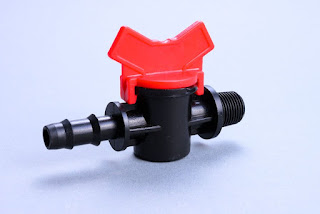The Impact of Mold Temperature Control on Plastic Molding Success
Plastic injection molding carried out by an experienced injection molding maker, involves a meticulous process that relies on several critical factors for achieving superior results. One such vital aspect is the control of melt and mold temperature. Melt temperature denotes the point at which the plastic resin is melted, while mold temperature signifies the temperature at which the molten plastic cools and solidifies inside the mold. A comprehensive understanding of the influence of these temperature parameters is paramount in ensuring successful plastic molding development and obtaining high-quality and durable plastic products.

Introduction to melt and mold temperature in plastic molding
Why temperature is a critical factor in plastic molding
The relationship between
melt temperature and mold temperature
The role
of melt temperature in plastic molding development
Understanding the concept of melt temperature
Melt temperature is the temperature at which the plastic material reaches its liquid state and becomes ready to be injected into the mold. Think of it as the sweet spot where the plastic is at its most malleable and can easily fill every nook and cranny of the mold. The melt temperature is determined by the specific plastic material being used, and getting it right is essential for producing high-quality molded parts.
Effects of high melt temperature on plastic properties
Raising the melt temperature beyond the recommended range may seem tempting, like turning up the heat on a stove, but it can have some nasty consequences. High melt temperatures can lead to overheating, causing the plastic to degrade or even burn. This can result in poor part quality, such as surface defects, warping, or decreased strength. It's like leaving your dinner in the oven for too long - it's not going to turn out well.
Effects of low melt temperature on plastic properties
On the flip side, setting the melt temperature too low can be equally problematic. Low melt temperatures can cause poor flowability, resulting in incomplete filling of the mold and inadequate part formation. It's like trying to pour cold syrup - it's going to be slow and lumpy. So, finding the right balance and maintaining the correct melt temperature is crucial for achieving the desired plastic properties and flawless mold filling.
Techniques for controlling and adjusting melt
and mold temperature
Methods for monitoring
and regulating melt temperature
To ensure proper melt temperature control, it is essential to implement effective monitoring and regulating techniques. This can be achieved through the use of temperature sensors, thermocouples, or infrared cameras to measure and maintain the desired melt temperature. Additionally, adjusting the barrel temperature settings and optimizing the heating capacity of the machine can help control the melt temperature.
Techniques for managing and adjusting mold temperature
Managing the mold temperature is equally important in plastic molding.
Techniques such as using water or oil cooling systems, employing temperature
control units (TCUs), or utilizing mold temperature controllers can help
regulate and adjust the mold temperature as needed. It is crucial to find the
right balance to ensure consistent and accurate cooling of the mold.
Tips
for maintaining optimal melt and mold temperature throughout the process
Maintaining the ideal melt and
mold temperature during the plastic molding process is crucial and requires the
expertise of a skilled plastic injection
mould manufacturer. To achieve this, it is important to follow certain tips
and practices. These include preheating the machine and mold, utilizing
insulation materials to reduce heat loss, and implementing real-time monitoring
systems for temperature control. Regular maintenance of the machine and cooling
systems is also essential to prevent temperature fluctuations and ensure
consistent and high-quality results. Thus, careful attention to melt and mold
temperature is vital for successful plastic molding and relies on the expertise
of a reputable plastic injection mold manufacturer.
Conclusion
By understanding the role of temperature in the process, identifying optimal temperature ranges for different plastics, and implementing effective temperature control techniques, a plastic injection molding manufacturer can achieve consistent and high-quality results. It is essential to address any temperature-related challenges promptly and adopt best practices to ensure reliable and efficient plastic molding operations. By prioritizing temperature management, plastic moulding manufacturers can enhance product quality, reduce defects, and meet the demands of an ever-evolving industry.

Comments
Post a Comment